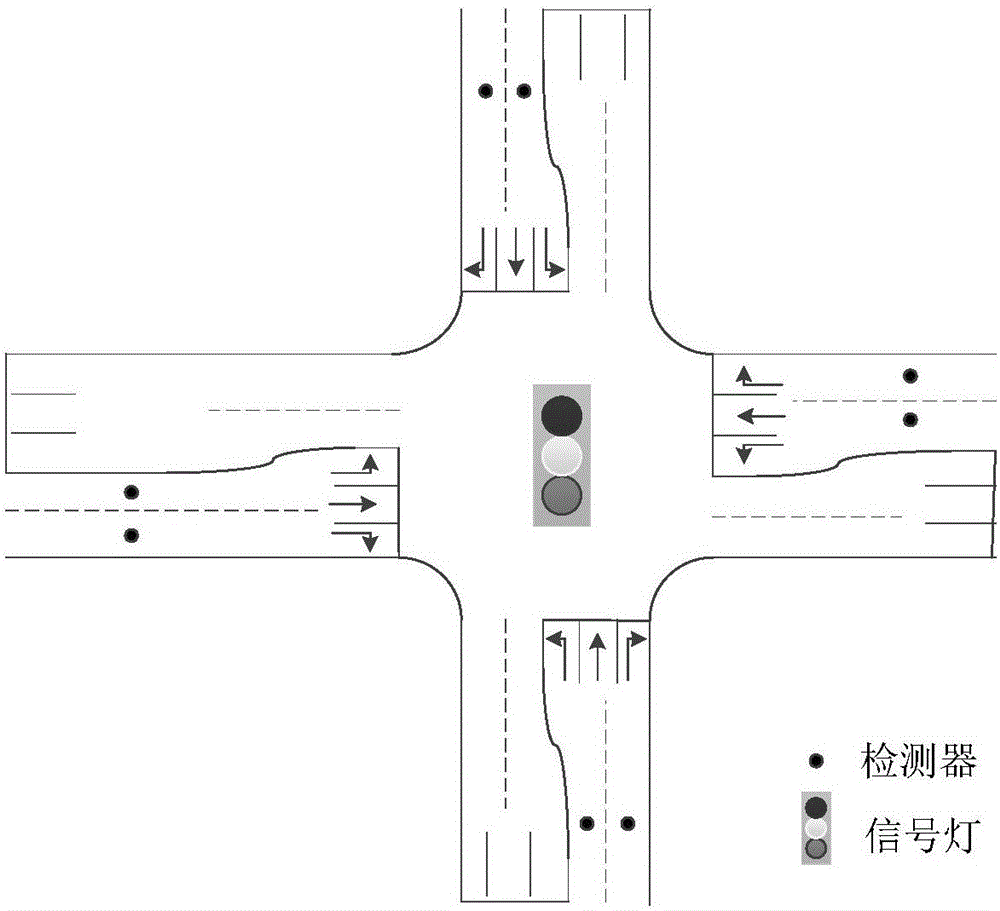Signal control intersection queuing length estimation method based on single section low frequency detection data
A technology of signal-controlled intersection and queuing length, which is applied in the field of queuing length estimation at signal-controlled intersections based on single-section low-frequency detection data, and can solve problems such as errors, matching, and queuing length exceeding the detectors in the data collected by fixed-point detectors on low-frequency road sections.
- Summary
- Abstract
- Description
- Claims
- Application Information
AI Technical Summary
Problems solved by technology
Method used
Image
Examples
Embodiment example
[0108] Such as Figure 7 As shown, a method for queuing length estimation at signal-controlled intersections based on single-section low-frequency detection data includes the following steps:
[0109] S1. Use a single-section fixed-point detector to collect data at the signal-controlled intersection. The detection data includes arrival flow, speed and time occupancy. The fixed-point detector is a single-section fixed-point detector, and the observation time is not less than 60s Output detection data at intervals, that is, the data output frequency is not higher than 1 / 60s -1 ;
[0110] Single-section fixed-point detector: generally arranged at the intersection 250m away from the stop line, the common ones are coil detectors, microwave detectors, radar detectors, etc.
[0111] S2, use the relationship between the arrival flow, speed and time occupancy to judge whether the queue length in each observation time interval exceeds the length detection range of the detector, and if...
PUM
 Login to View More
Login to View More Abstract
Description
Claims
Application Information
 Login to View More
Login to View More - R&D
- Intellectual Property
- Life Sciences
- Materials
- Tech Scout
- Unparalleled Data Quality
- Higher Quality Content
- 60% Fewer Hallucinations
Browse by: Latest US Patents, China's latest patents, Technical Efficacy Thesaurus, Application Domain, Technology Topic, Popular Technical Reports.
© 2025 PatSnap. All rights reserved.Legal|Privacy policy|Modern Slavery Act Transparency Statement|Sitemap|About US| Contact US: help@patsnap.com



